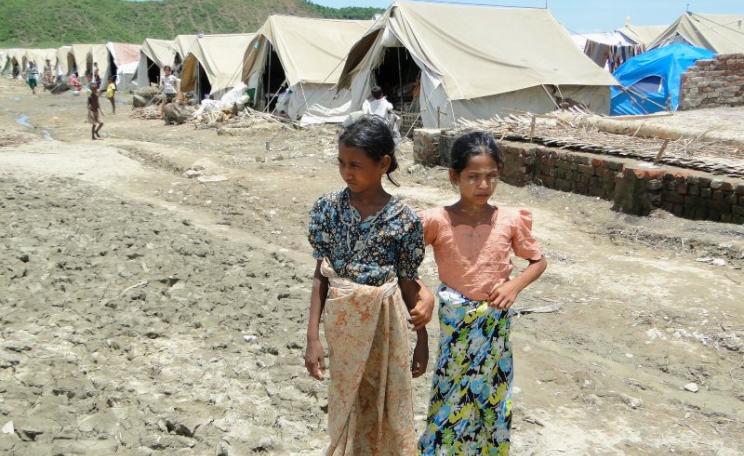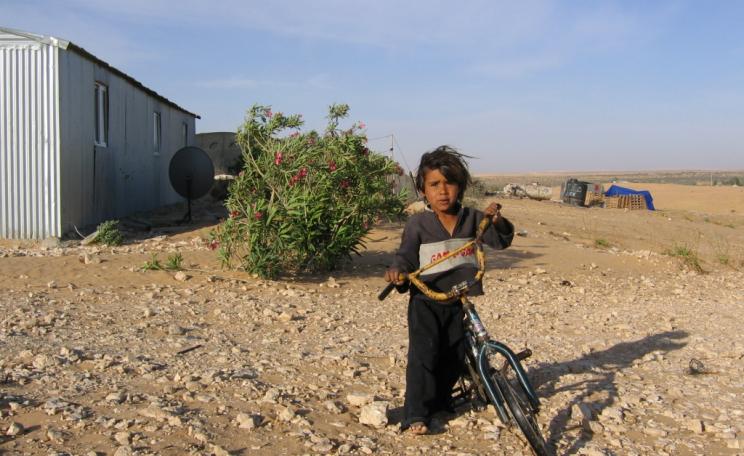The destruction of Umm Al Hiran will make it easier to destroy other Arab villages within Israel and resettle Jews on their ruins. It would represent the beginning of the Prawer Plan, simply under another name.
In Israel's Negev desert, ethnic cleansing is once again rearing its ugly head.
The unrecognised Bedouin village of Umm Al Hiran faces demolition and replacement with a Jewish town, Hiran.
Seven hundred villagers face displacement, and only because they are of the wrong ethnicity.
Umm Al Hiran is one of tens of unrecognised villages in the Negev, inhabited by descendants of the Abu al-Qian tribe. Located in the area of Wadi Attir, the village is divided into two areas: Umm Al Hiran and Attir.
Attir is also facing demolition in order to expand a Jewish National Fund (JNF) forest - in Israel, greenery is more important than Palestinians. Both these areas are in the master plan of the Be'er Sheva metropolitan area.
While the Israeli state has justified the demolition, by claiming the villagers are squatters on government land, the reality is that they were transferred to the Yattir Forest in 1956 by direct order of the military administration at the time. Villagers claim this was done to clear space for military use and that they were given guns to defend the border from West Bank infiltrators.
Umm al Hiran was founded by military order - yet it is 'unrecognised'
The government never denied the transfer of these villagers. The transfer was verified by a military document that stated the residents of Umm Al Hiran received over 7,000 dunams of this land near the Wadi by direct order in 1956. This would make it their second displacement, after having been moved in 1948 from their original lands, now used by Kibbutz Shoval.
Over the past ten years the village has endured several housing demolitions, due to its unrecognised status. Villagers have been offered the 'compromise' of moving to the nearby town of Hura where they will be given an 800 square metre plot of land. The residents refused, as they do not want to be moved for a third time.
Umm Al Hiran's case is especially significant as it sets a precedent. While other unrecognised villages such as Al-Araqib and Dahmash (see video, below) have faced multiple demolitions, none have been replaced with a Jewish town.
The destruction of Umm Al Hiran will make it easier to destroy other Arab villages within Israel and resettle Jews on their ruins. It would represent the beginning of the Prawer Plan, simply under another name. Unfortunately, this outcome is looking increasingly likely.
The destruction of Umm Al Hiran will make it easier to destroy other Arab villages within Israel and resettle Jews on their ruins. It would represent the beginning of the Prawer Plan, simply under another name.
On August 23, Israeli machinery and bulldozers began building the foundations for the Jewish settlement of Hiran. The villagers now fear their displacement is imminent. The additional presence of the Israeli police suggests the state is determined to begin wiping Umm Al Hiran off the face of the earth.
Video: the unrecognised village of Dahmash in the eyes of its children. Child: Rimas Safyan Aasaf; Videographer and Director: Naif Hammoud; Music: Al Fira'a.
The villagers of Umm Al Hiran have exhausted most avenues to prevent the demolition of their homes. Legal appeals have been fruitless, which is unsurprising considering that the legal system is set up to promote the Jewish character of Israel - hardly a forum in which Palestinian citizens can attain justice.
In May, the Israeli Supreme Court ruled that, despite government documents to the contrary, Umm Al Hiran was built on state land, paving the way for its destruction. The judges ruled that the government's actions did not in any way violate the villager's rights, and even if such rights were violated, it was "proportionate harm".
The Judaization of the Negev
However, there is little doubt that if the residents of Umm Al Hiran were Jewish, there would be no problem with their presence on the land. In fact, there are several Jewish-owned farms in the area surrounding the village; none have been asked to leave, and all are recognised by the state.
It seems that in Israel, 'proportionate harm' is any harm inflicted on Palestinian citizens for the benefit of the Jewish population.
It is significant that the core group slated to move into Hiran's 2,400 housing units are nationalist religious Jews, many of whom have ties to West Bank settlements, and will be joined by a smaller number of secular residents from nearby Meitar. A number of the nationalist Jews are living in a nearby forest waiting to move to Hiran.
The town of Hiran, which is said to include a hotel and country club, is part of a larger government settlement program in the Negev that began in 2002 when the Knesset approved the founding of 14 new Israeli communities in the region.
The villagers of Umm Al Hiran have said that they are willing to be a part of the new Hiran development, but doubt that the community would accept them. With rising right-wing sentiments and racist tensions in Israel, this fear is not unfounded.
The politics of unrecognition plays a significant role in the plan to destroy Umm Al Hiran. Unrecognised villages such as Umm Al Hiran do not have access to infrastructure or electricity.
The government has used the issue of lack of services to try and convince Bedouin communities to leave their land and move to government-designated townships (not unlike Native American reserves), where they will be provided with water, electricity and schools.
The irony of this offer is that individual Jewish Israeli families, who set up small farms in the Negev region, enjoy state subsidies. Moreover, one of Umm Al Hiran's neighbours is a dog farm that enjoys access to water and electricity. So, it seems that it is preferable to be a dog than a Palestinian Bedouin in Israel.
The Bedouin struggle continues
There is no reason that the Bedouin of Umm Al Hiran should have to move in order to have basic services. The villagers of Umm Al Hiran wish to maintain their rural lifestyle and demand official recognition - something that the state has ignored for many years.
The residents of Umm Al Hiran are not prepared to give up without a fight - they have announced their intention to stage protests against their impending displacement; an escalation in their struggle, which has mainly been based on litigation.
They have the support of several Palestinian civil society organisations, such as Adalah and 7amleh who produced a video about the village, in an attempt to raise international awareness.
The demolition of Umm Al Hiran will mark the advent of the Prawer Plan, and must be fought against tooth and nail. Just as Prawer did not pass in 2011, it should be met with the same outrage in 2015.
Alia Al Ghussain is a freelance writer currently based in Haifa. Her writing interests include political and social issues in the Middle East, refugee rights in Europe and the rise of European racism. She tweets @little_a91
This article was originally published by openDemocracy under a Creative Commons Attribution-NonCommercial 4.0 International licence.





